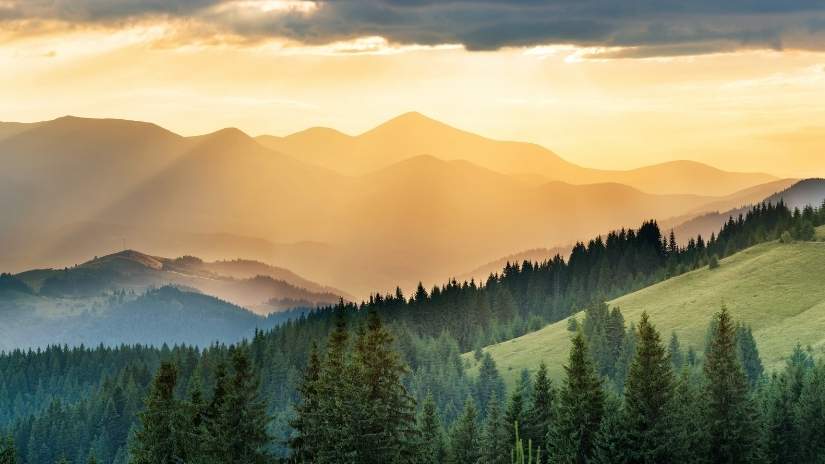Arkansas first began to adopt its own official state symbols in 1901. Many more have been adopted since then, and a state symbol can come in the form of state animals, mammals, a state bird and flower, fruits, vegetables, amphibians, nicknames, insects, and much more.
State symbols were adopted by Arkansas to best represent the state and its historical roots, past and present wildlife and nature, and the physical makeup of the Natural State. Like all other states, there are many Arkansas state symbols that epitomize it.
Arkansas State Tree Pine Tree
The Arkansas state tree is the pine tree (pinus). Pine trees hold a lot of significance within the state, and the pine tree timber resources and reforestation efforts across the state are part of the reason for its adoption as the official state tree in 1939.
Arkansas has four native species of pine; shortleaf pine, longleaf pine, loblolly pine, and slash pine. Both the shortleaf and loblolly pine trees can grow up to 100 feet in height and are located throughout the two national forests of Arkansas, Ouachita National Forest, and the Ozark St. Francis National Forest.

Before the time of the European-American settlement, Arkansas’ forests were brimming with life and diversity, showcasing magical assortments of plants and trees. Unfortunately, by the end of the 19th century, external markets for timber were being used to forge railroads and other means of transportation, which left Arkansas hung and dry.
Back in the 1930s, there were many areas of Arkansas that had been totally deforested. Fortunately, thanks to the brilliant efforts of the state’s people over the past several decades, Arkansas is finally seeing its pine forests begin to recover.
The Loblolly pine tree, otherwise known as the Pinus taeda, grows across a large portion of Arkansas in abundance and it is still the most significant timber species in the state. You can find them on various tree farms but they are also found in the wild and it is estimated to be the second-largest species of tree in the U.S. after the red maple.
Facts About the Arkansas State Tree (Pine Tree)
Pine trees are not just a massive part of our ecosystem, they truly are a sight to behold too, with the world’s largest pine tree being 268 feet tall! Here are some more interesting facts about pine trees that you probably didn’t know:
- There are roughly 100 different species of pine trees in the world.
- Pine trees are considered to be evergreens due to them keeping their needles for around 2 years.
- Once their needles fall, new and fresh needles will replace them.
- Pine needles can be as long as 11 inches!
- The smallest pine trees will only grow to around 4 feet.
- The male and female pine trees both produce woody cones.
- The female cones produce the seeds, whilst the male cones produce the pollen.
- Pine trees will typically live between 80 to 100 years.

Final Thoughts
Most states will have their symbols showcase a relevant story, that is indicative of the state and its history, and the Natural State puts its history and what it stands for across very well in the Arkansas state tree.
This interesting fact about Arkansas and a whole host of others is what makes the state so unique and fascinating to those that live there or are researching the historical events or geological makeup of the state.


